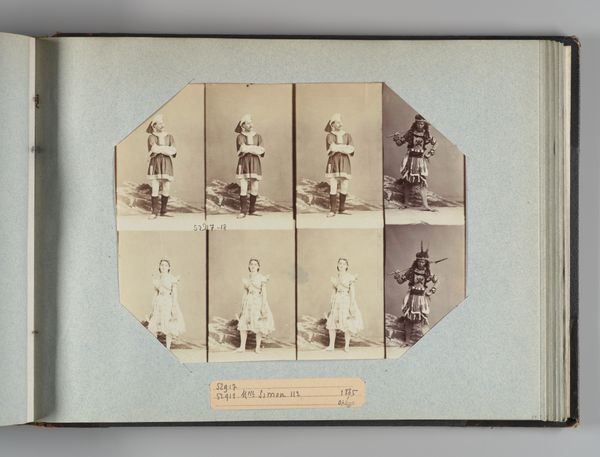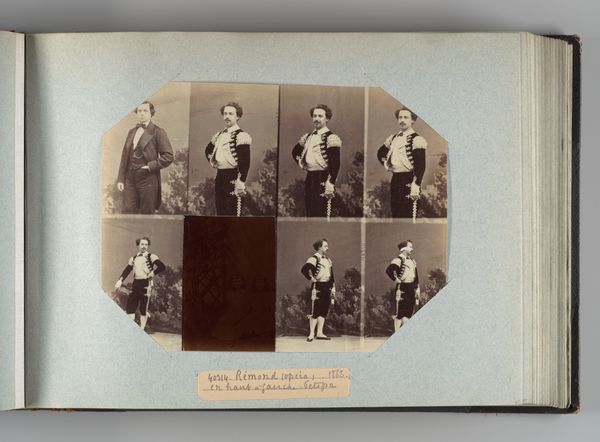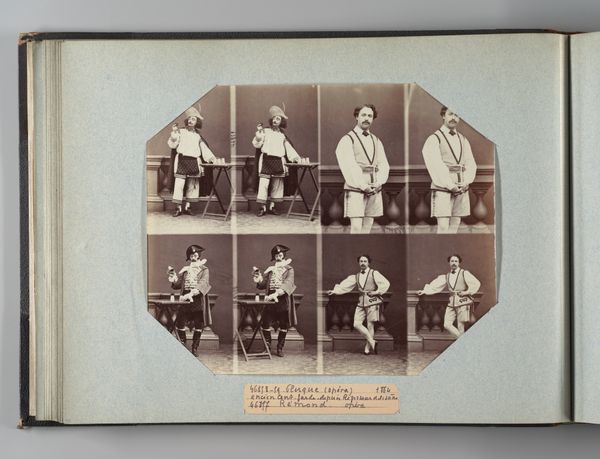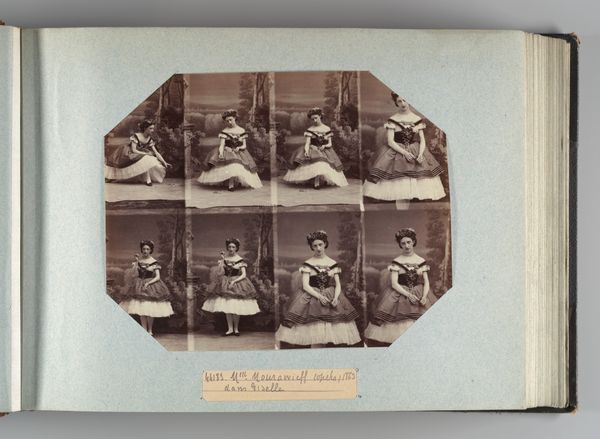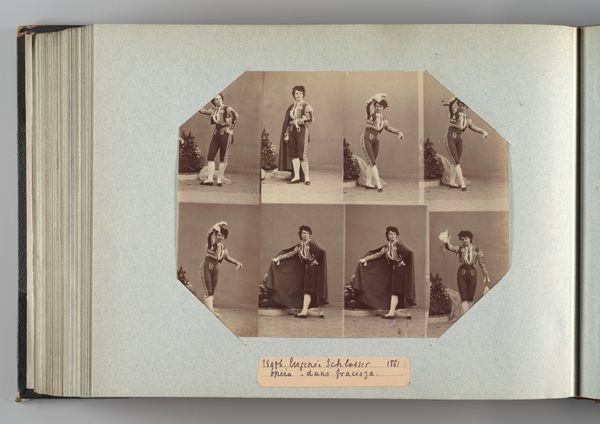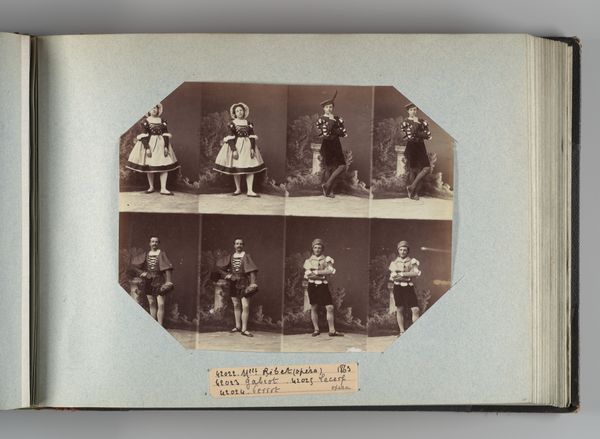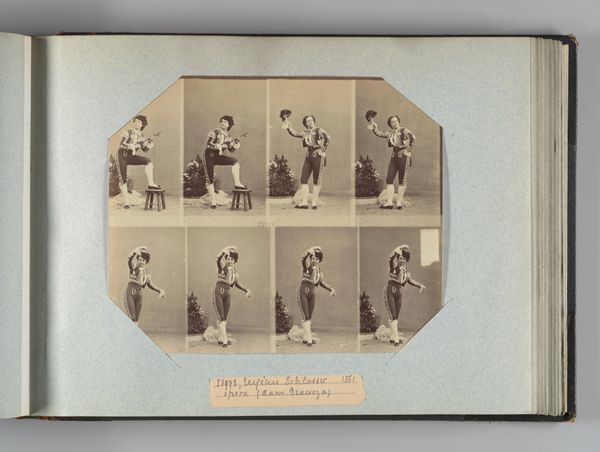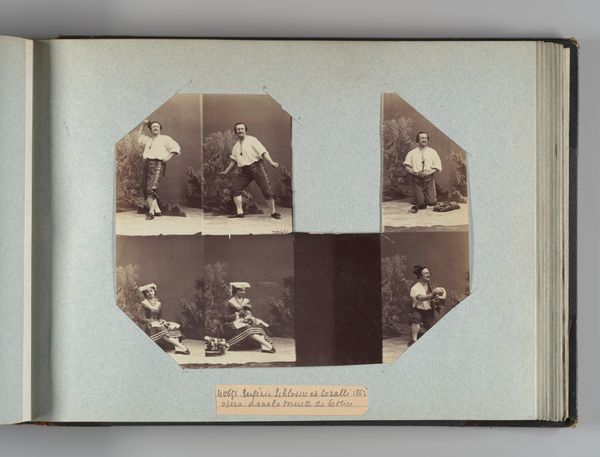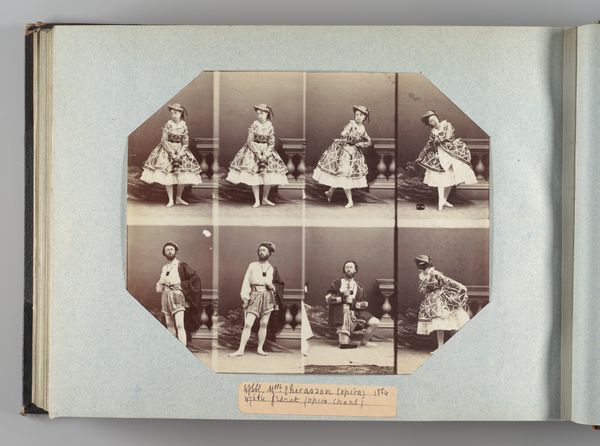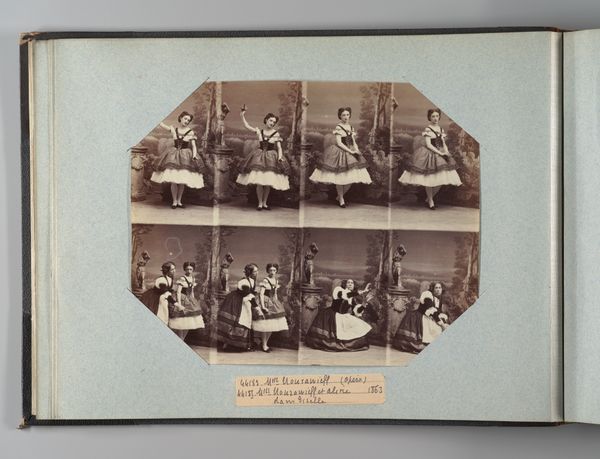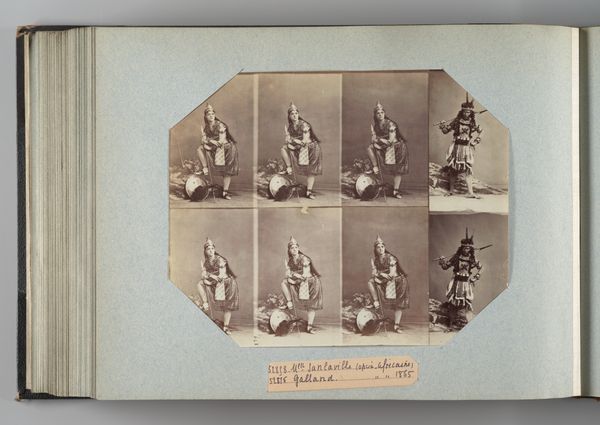
photography, albumen-print
#
portrait
#
photography
#
group-portraits
#
albumen-print
Dimensions: Image: 7 3/8 × 9 1/4 in. (18.8 × 23.5 cm) Album page: 10 3/8 × 13 3/4 in. (26.3 × 35 cm)
Copyright: Public Domain
Editor: This is a fascinating albumen print from the 1850s or 60s, created by André-Adolphe-Eugène Disdéri, titled "Elise Parent; Corinne." The series of poses… it almost looks like an early motion study. What catches your eye most about this piece? Curator: I see echoes of classical depictions of women, certainly. But consider the setting: each image is painstakingly arranged. The railing and column fragment where we see Corinne striking what would have been understood as theatrical poses, each a deliberate evocation of a mood or character type. What meaning could that hold? Editor: Are you thinking about how photography was perceived at the time? As mimicking or perhaps challenging traditional painting and sculpture? Curator: Precisely. Early photography often borrowed visual language from painting, trying to gain legitimacy as art. But here, the multiple poses also evoke a sense of performance, almost a catalogue of emotions. Consider also the potential tension here between naturalism versus artifice, reality versus ideals. Editor: So, she's not just posing as 'Corinne,' but performing ideas about femininity? Curator: Yes. Each pose holds echoes of established allegories, perhaps familiar literary tropes; but the photographic medium then claims to depict an individual subject, not just an ideal. I would want to ask: in what cultural context does 'Corinne' become not just a name, but a potent sign? And for whom? Editor: That’s really interesting. I was focusing on the composition, but it seems there’s a much richer narrative at play here – about artifice and identity. Curator: And visual storytelling, even within the limitations of early photography! There is potent storytelling in how Corinne's image reflects, refracts and remakes the classical past for the modern age. It’s not just a portrait; it's an intersection of representation.
Comments
No comments
Be the first to comment and join the conversation on the ultimate creative platform.


